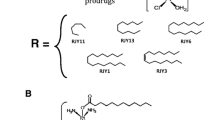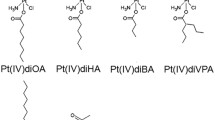Summary
The cellular effects of a novel DNA-intercalating agent, the bipyridyl complex of platinum(II) with diphenyl thiourea, [Pt(bipy)(Ph2-tu)2]Cl2, has been analyzed in the cisplatin (cDDP)—sensitive human ovarian carcinoma cell line, 2008, and its—resistant variant, C13* cells, in which the highest accumulation and cytotoxicity was found among six related bipyridyl thiourea complexes. We also show here that this complex causes reactive oxygen species to form and inhibits topoisomerase II activity to a greater extent in the sensitive than in the resistant line. The impairment of this enzyme led to DNA damage, as shown by the comet assay. As a consequence, cell cycle distribution has also been greatly perturbed in both lines. Morphological analysis revealed deep cellular derangement with the presence of cellular masses, together with increased membrane permeability and depolarization of the mitochondrial membrane. Some of these effects, sometimes differentially evident between the two cell lines, might also be related to the decrease of total cell magnesium content caused by this thiourea complex both in sensitive and resistant cells, though the basal content of this ion was higher in the cDDP-resistant line. Altogether these results suggest that this compound exerts its cytotoxicity by mechanisms partly mediated by the resistance phenotype. In particular, cDDP-sensitive cells were affected mostly by impairing topoisomerase II activity and by increasing membrane permeability and the formation of reactive oxygen species; conversely, mitochondrial impairment appeared to play the most important role in the action of complex F in resistant cells.









Similar content being viewed by others
References
Muggia F (2009) Platinum compounds 30 years after the introduction of cisplatin: implications for the treatment of ovarian cancer. Gynecol Oncol 112:275–281
Stewart DJ (2007) Mechanisms of resistance to cisplatin and carboplatin. Critic Rev Oncol/Hematol 63:12–31
Crooke ST, Duvenny VH, Galvan L, Prestayko A (1978) Structure-activity relationships of anthracyclines relative to effects on macromolecular syntheses. Mol Pharmacol 14:290–298
Cusumano M, Di Pietro ML, Giannetto A, Vainiglia PA (2005) The intercalation to DNA of bipyridyl complexes of platinum(II) with thioureas. J Inorg Biochem 99:560–565
Marverti G, Cusumano M, Ligabue A, Di Pietro ML, Vainiglia PA, Ferrari A, Bergomi M, Moruzzi MS, Frassineti C (2008) Studies on the antiproliferative effects of novel DNA-intercalating bipiridylthiourea-Pt(II) complexes against cisplatin-sensitive and -resistant human ovarian cancer cells. J Inorg Biochem 102:699–712
Raj AS, Heddle JA (1980) Simultaneous detection of chromosomal aberrations and sister-chromatid exchanges. Mutation Res 78:253–260
Wilson WR, Harris NM, Ferguson LR (1984) Comparison of the mutagenic and clastogenic activity of amsacrine and other DNA-intercalating drugs in cultured V79 chinese hamster cells. Cancer Res 44:4420–4431
Chung TDY, Drake FH, Tan KB, Per SR, Crooke ST, Mirabelli CK (1989) Characterization and immunological identification of cDNA clones encoding two human DNA topoisomerase II isozymes. Proc Natl Acad Sci USA 86:9431–9435
Binaschi M, Capranico G, De Isabella P, Mariani M, Supino R, Tinelli S, Zumino F (1990) Comparison of DNA cleavage induced by etoposide and doxorubicin in two human small-cell lung cancer lines with different sensitivities to topoisomerase II inhibitors. Int J Cancer 45:347–352
Fukushima T, Takemura H, Yamashita T, Ishisaka T, Inai K, Imamura S, Urasaki Y, Ueda T (1999) Multidrug resistance due to impaired DNA cleavage in a VP-16-resistant human leukemia cell line. Anticancer Res 19:5111–5115
Wolf FI, Trapani V, Cittadini A (2008) Magnesium and the control of cell proliferation: looking for a needle in a haystack. Magnesium Res 21:83–91
Covacci V, Bruzzese N, Sgambato A, Ganapathi R, Cittadini A, Wolf FI (2000) Effect of extracellular magnesium on topoisomerase II activity and expression in human leukemia HL-60 cells. J Cell Biochem 78:325–333
Rigobello MP, Folda A, Scutari G, Bindoli A (2005) The modulation of thiol redox state affects the production and metabolism of hydrogen peroxide by heart mitochondria. Arch Biochem Biophys 441:112–122
Witte AB, Anestål K, Jerremalm E, Ehrsson H, Arnér ESJ (2005) Inhibition of thioredoxin reductase but not of glutathione reductase by the major classes of alkylating and platinum-containing anticancer compounds. Free Radic Biol Med 39:696–703
Marzano C, Gandin V, Folda A, Scutari G, Bindoli A, Rigobello MP (2007) Inhibition of thioredoxin reductase by auranofin induces apoptosis in cisplatin-resistant human ovarian cancer cells. Free Radic Biol Med 42:872–881
Andrews PA, Albright KD (1992) Mitochondrial defects in cis-diamminedichloroplatinum(II)-resistant human ovarian carcinoma cells. Cancer Res 52:1895–1901
Kueng W, Siber E, Eppenberger U (1989) Quantification of cells cultured on 96-well plates. Anal Biochem 182:16–19
Mosmann T (1983) Rapid colorimetric assay for cellular growth and survival: application to proliferation and cytotoxicity assay. J Immunol Methods 65:55–63
Lugli E, Troiano L, Cossarizza A (2007) Polychromatic analysis of mitochiondrial membrane potential using JC-1. Curr Prot Cytom 7.32.1, 7.32.15
Cossarizza A, Baccarani-Contri M, Kalashnikova G, Franceschi C (1993) A new method for the cytofluorimetric analysis of mitochondrial membrane potential using the J-aggregate forming lipophilic cation 5, 5′-6, 6′-tetrachloro-1, 1′, 3, 3′-tetraethylbenzimidazolcarbocyanine iodide (JC-1). Biochem Biophys Res Com 197:40–45
Troiano L, Ferraresi R, Lugli E, Nemes E, Roat E, Nasi M, Pinti M, Cossarizza A (2007) Multiparametric analysis of cells with different mitochondrial membrane potential durino apoptosis by polychromatic flow cytometry. Nature Prot 2:2719–2727
Marverti G, Andrews PA, Piccinini G, Ghiaroni S, Barbieri D, Moruzzi MS (1997) Modulation of cis-diamminedichloroplatinum(II) accumulation and cytotoxicity by spermine in sensitive and resistant human ovarian carcinoma cells. Eur J Cancer 33:669–675
Killilea DW, Ames BN (2008) Magnesium deficiency accelerates cellular senescence in cultured human fibroblasts. Proc Natl Acad Sci U S A 105:5768–5773
Lowry OH, Rosebrough NJ, Farr AL, Randall RJ (1951) Protein measurement with the Folic phenol reagent. J Biol Chem 193:265–275
Barret JM, Calsou P, Kragh Larsen A, Salles BA (1994) A cisplatin-resistant murine leukemia cell line exhibits increased topoisomerase II activity. Mol Pharmacol 46:431–36
Bradford MM (1976) A rapid and sensitive method for quantification of microgram quantities of protein utilising the principle of protein-dye binding. Anal Biochem 72:248–254
Hutt AM, Kalf GF (1996) Inhibition of human DNA topoisomerase II by hydroquinone and p-benzoquinone, reactive metabolites of benzene. Environ Health Perspect 104:1265–1269
Barker CR, McNamara AV, Rackstraw SA, Nelson DE, White MR, Watson AJM, Jenkins JR (2006) Inhibition of Hsp90 acts synergistically with topoisomerase II poisons to increase the apoptotic killing of cells due to an increase in topoisomerase II mediated DNA damage. Nucl Acids Res 34:1148–1157
Johnson MK, Loo G (2000) Effects of epigallocatechin gallate and quercetin on oxidative damage to cellular DNA. Mutat Res 459:211–218
Pagliacci MC, Spinozzi F, Migliorati G, Fumi G, Smacchia M, Grignani F, Riccardi C, Nicoletti I (1993) Genistein inhibits tumour cell growth in vitro but enhances mitochondrial reduction of tetrazolium salts: a further pitfall in the use of MTT assay for evaluating cell growth and survival. Eur J Cancer 29:1573–1577
Hartmann A, Speit G (1995) Genotoxic effects of chemicals in the single cell gel (SGE) test with human blood cells in relation to the induction of sister-chromatid exchanges (SCE). Mutat Res 346:49–56
Chen Y, Kramer DL, Diegelman P, Vujcic S, Porter CW (2001) Apoptotic signaling in polyamine analogue-treated SK-MEL-28 human melanoma cells. Cancer Res 61:6437–6444
Li P, Nijhawan D, Budihardjo I, Srinivasula SM, Ahmad M, Alnemri ES, Wang X (1997) Cytochrome c and dATP-dependent formation of Apaf-1/caspase-9 complex initiates an apoptotic protease cascade. Cell 91:479–489
Sasada T, Nakamura H, Ueda S, Sato N, Kitaoka Y, Gon Y, Takabayashi A, Spyrou G, Holmgren A, Yodoi J (1999) Possible involvement of thioredoxin reductase as well as thioredoxin in cellular sensitivity to cisdiamminedichloroplatinum(II). Free Radic Biol Med 27:504–514
Berridge MV, Tan AS (1993) Characterization of the cellular reduction of 3-(4, 5-dimethylthiazol-2-yl)-2, 5-diphenyltetrazolium bromide (MTT): subcellular localization, substrate dependence, and involvement of mitochondrial electron transport in MTT reduction. Arch Biochem Biophys 303:474–482
Troiano L, Granata ARM, Cossarizza A, Kalashnikova G, Bianchi R, Pini G, Tropea G, Carani C, Franceschi C (1998) Mitochondrial membrane potential and DNA stainability in human sperm cells: a flow cytometry analysis with implications for male infertilità. Exp Cell Res 241:384–393
Xu D, Lu Q, Hu X (2006) Down-regulation of P-glycoprotein expression in MDR breast cancer cell MCF-7/ADR by honokiol. Cancer Lett 243:274–280
Choi W, Gerner EW, Ramdas L, Dupart J, Carew J, Proctor L, Huang P, Zhang W, Hamilton SR (2005) Combination of 5-fluorouracil and N1, N11-Diethylnorspermine markedly activates spermidine/spermine N1-acetyltransferase expression, depletes polyamines and synergistically induces apoptosis in colon carcinoma cells. J Biol Chem 280:3295–3304
Brana MF, Ramos A (2001) Naphthalimides as anticancer agents: synthesis and biological activity. Curr Med Chem-Anti-Cancer Agents 1:237–255
Eder JP Jr, Chan VT-W, Ng S-W, Rizvi NA, Zacharoulis S, Teicher BA, Schnipper LE (1995) DNA topoisomerase IIα expression is associated with alkylating agent resistance. Cancer Res 55:6109–6116
Kim T-H, Zhao Y, Barber MJ, Kuharsky DK, Yin X-M (2000) Bid-induced cytochrome c release is mediated by a pathway independent of mitochondrial permeability transition pore and Bax. J Biol Chem 275:39474–39481
Ravishankar S, Ashraf QM, Fritz K, Mishra OP, Delivoria-Papadopoulos M (2001) Expression of Bax and Bcl-2 proteins during hypoxia in cerebral cortical neuronal nuclei of newborn piglets: effect of administration of magnesium sulfate. Brain Res 901:23–29
Bonomini F, Tengattini S, Fabiano A, Bianchi R, Rezzani R (2008) Atherosclerosis and oxidative stress. Histol Histopathol 23:381–390
Farruggia G, Iotti S, Prodi L, Montalti M, Zaccheroni N, Savage PB, Trapani V, Sale P, Wolf FI (2008) 8-Hydroxyquinoline derivatives as fluorescent sensors for magnesium in living cells. J Am Chem Soc 128:344–350
Kubota T, Shindo Y, Tokuno K, Komatsu H, Ogawa H, Kudo S, Kitamura Y, Suzuki K, Oka K (2005) Mitochondria are intracellular magnesium stores: investigation by simultaneous fluorescent imagings in PC12 cells. Biochim Biophys Acta 1744:19–28
Lucy JA (1982) Biological membranes. In: Chapman D (ed) Biomembrane fusion. Academic Press, London, pp 367–415
Ahkong QF, Cramp FC, Fisher D, Howell JI, Tampion W, Verrinder M, Lucy JA (1973) Chemically-induced and thermally-induced cell fusion: lipid-lipid interactions. Nat New Biol 242:215–217
Lucy JA, Ahkong QF (1986) An osmotic model for the fusion of biological membranes. FEBS 199:1–11
Acknowledgements
This work was supported by a grant from MURST 60%, and from Associazione Angela Serra per la Ricerca sul Cancro, Azienda Ospedaliera Policlinico di Modena, Modena, Italy. This work has been also partially supported by PRIN (Programmi di Ricerca Scientifica di Rilevante Interesse Nazionale) 2004, MIUR, Italy.
This work was supported by an RFO grants from the University of Bologna and PRIN 2007ZT39FN from MIUR to S. Iotti.
Author information
Authors and Affiliations
Corresponding author
Rights and permissions
About this article
Cite this article
Marverti, G., Ligabue, A., Montanari, M. et al. Characterization of the cell growth inhibitory effects of a novel DNA-intercalating bipyridyl-thiourea-Pt(II) complex in cisplatin-sensitive and—resistant human ovarian cancer cells. Invest New Drugs 29, 73–86 (2011). https://doi.org/10.1007/s10637-009-9336-3
Received:
Accepted:
Published:
Issue Date:
DOI: https://doi.org/10.1007/s10637-009-9336-3




